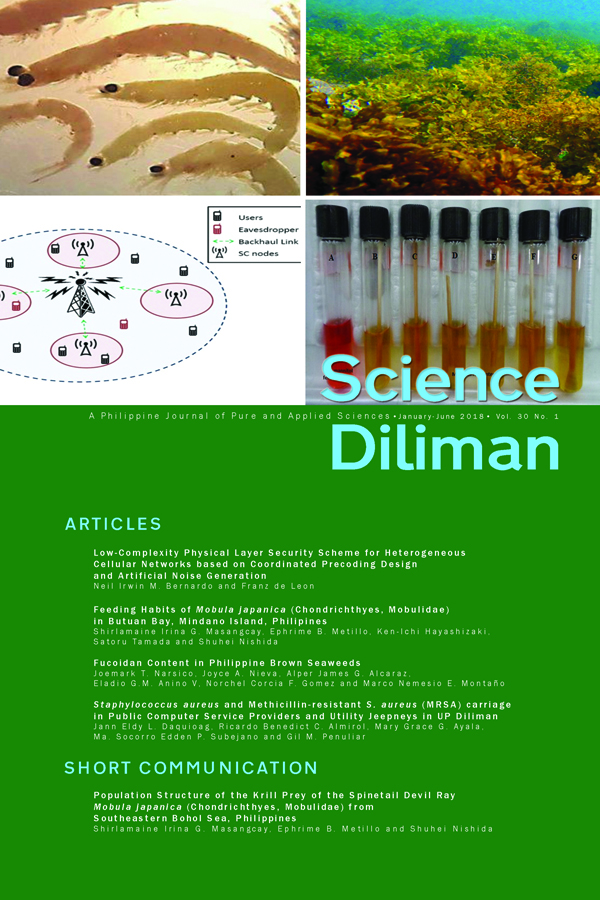Feeding Habits of <em>Mobula japanica</em> (Chondrichthyes, Mobulidae) in Butuan Bay, Mindanao Island, Philippines
Abstract
The diet of the Spinetail Devil Ray Mobula japanica Müller and Henle 1841 from Butuan Bay, Philippines was investigated from January to May 2016 using data on its stomach contents, and C and N stable isotope analyses, in order to contribute to the scarce information on the feeding biology of the threatened tropical populations of the Mobula species. Examination of 16 M. japanica stomachs revealed ingestion of the euphausiid Pseudeuphausia latifrons, sergestid shrimps Acetes intermedius and Lucifer spp. , copepods, and other rare prey items. The tropical krill P. latifrons was the most common, often the sole food, that increases body length of individuals towards the warmer months of April and May, which coincide with the peak season of M. japanica fisheries. Results from δ13C and δ15N stable isotope analysis are consistent with the assimilation of large zooplankton and micronektonic crustaceans. This study is the first report on the feeding of M. japanica in tropical waters and the identification of euphausiid P. latifrons as its dominant prey.
Keywords: Stomach content, Mobula, Pseudeuphausia latifrons, population structure, tropical



